In "Scânteia" There Were So Many Lies, I Thought It Was A More Than Surreal Magazine"
“În Scânteia erau asemenea minciuni, încît mi s-a părut un ziar mai mult decît suprarealist”
Interview with Theodor Cazaban.
More...Interview with Theodor Cazaban.
More...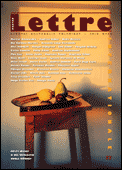

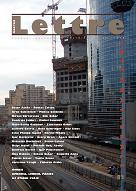
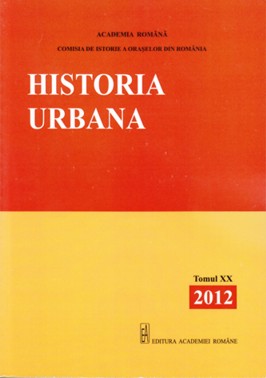
Keywords: Shakespeare; translation; Romanian principalities; 1848 revolution.
More...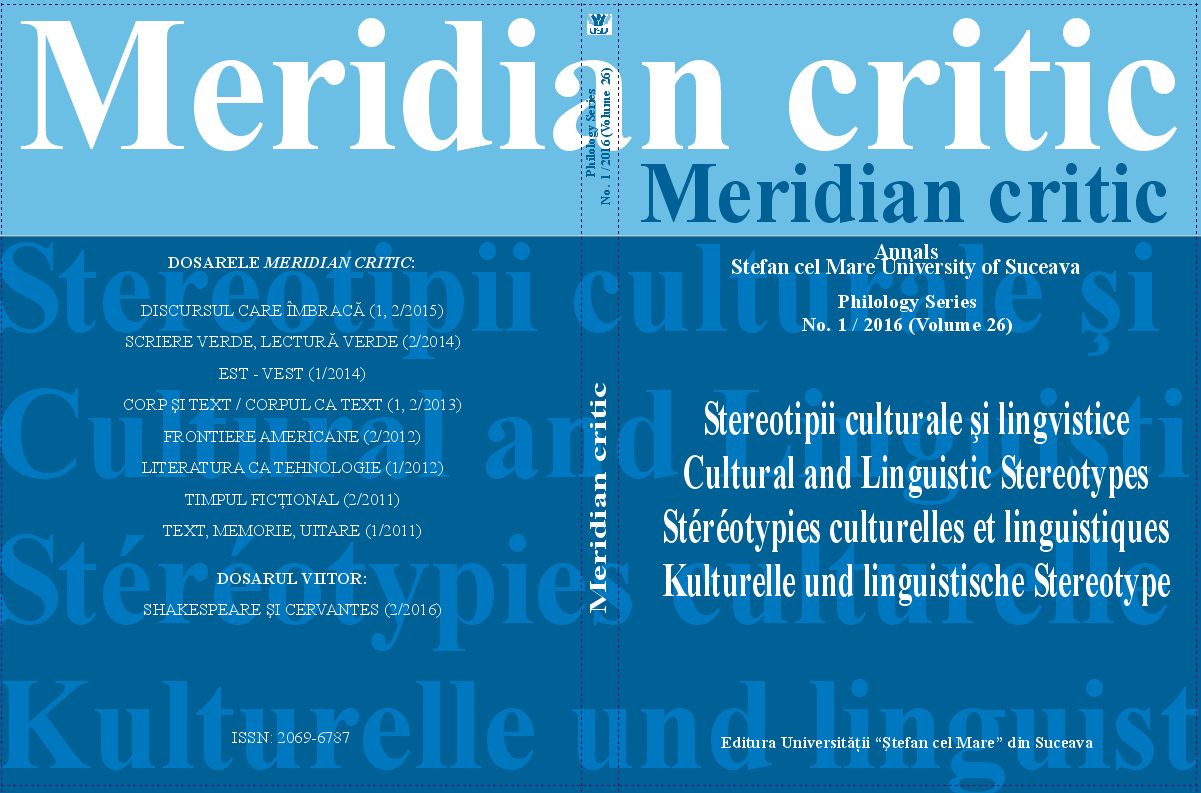
Keywords: structural stereotype; pragmatic force; religious functional style; the semantics of conformity;
Our paper focuses on finding out the content, origin and functions of a particular syntactic and semantico-pragmatic sterotype in Paul’s Epistle to the Romans. Our findings – which are positive as to the structural value of the stereotype under investigation – involve a broader characterization of the religious functional style in terms of form and content.
More...Keywords: Borrowings; Anglicisms; Romanian language;
We have described and commented on several aspects of the adaptation process of recent borrowings, especially Anglicisms, to the system of the Romanian language. We have presented our point of view concerning the way they have been registered in DOOM2 , while referring to the inconsistencies and the lack of systematization of the spelling, pronunciation and morphological.
More...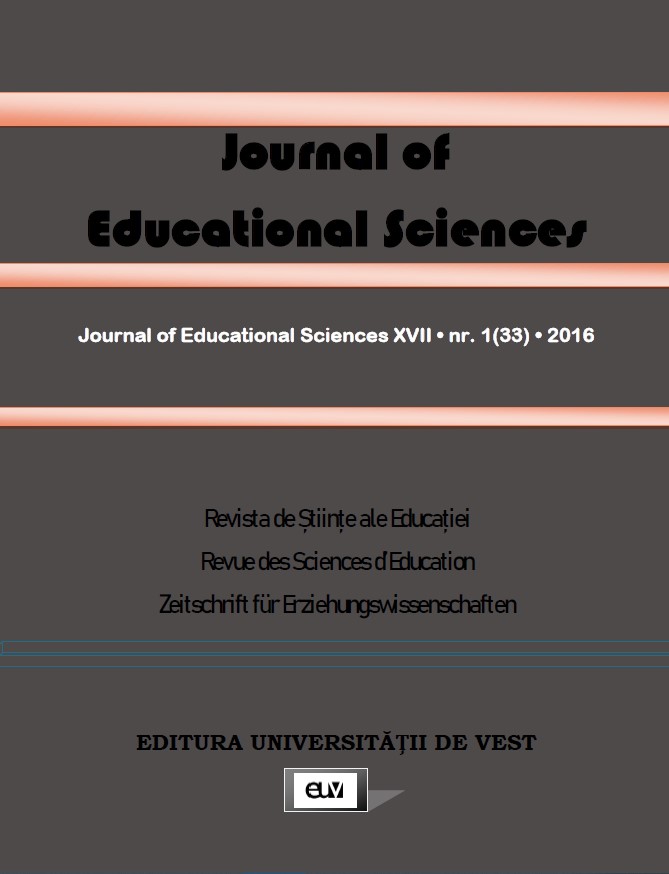
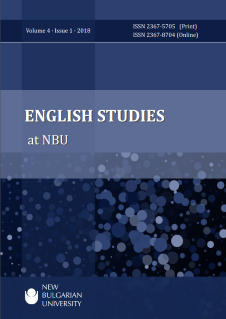
Keywords: Female weight; Feminist; ‘Masculinist’; Men; Women; Oppression
This article is a masculinist examination of Festus Iyayi’s Violence and Chukwuma Ibezute’s Dance of Horror. The article despises the ideological stance of some feminists – that women are unfairly treated in society and in literature by men. It explores women’s relationship with men and contends that every woman is in control of her man and society around her. The article shows how women use marriage, love, sex, their body, social status, kitchen and cradle influence to hold men to ransom. The article, however, recommends that men should not act on their women’s unverifiable and manipulative claims. In all, the article concludes that women are oppressive and exploitative to men.
More...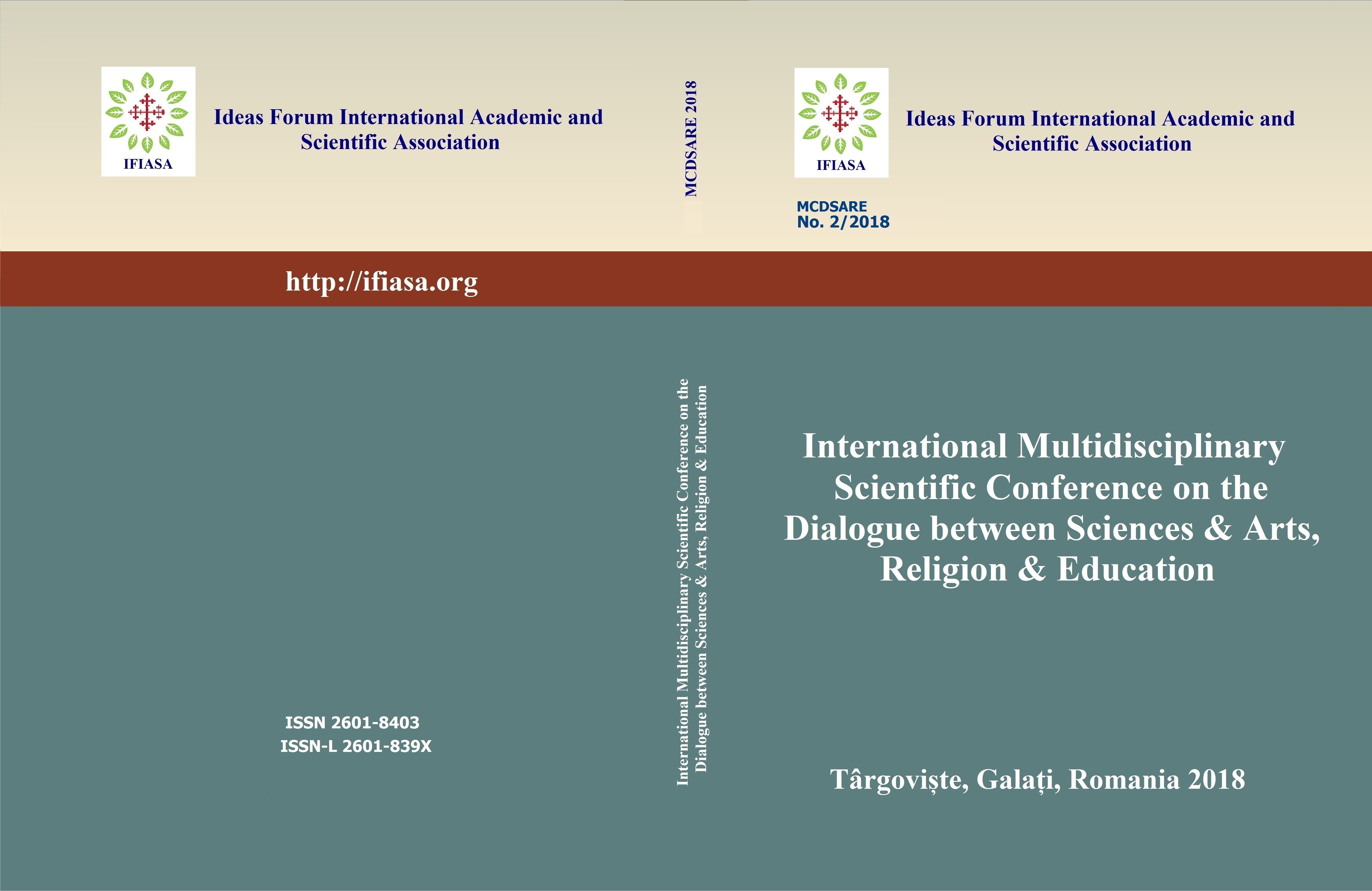
Keywords: transdiciplinarity; Religious education; arts; multidisciplinarity; nonformal education;
The astral time for Romania represented the time of celebrating the Great Union, on 1st December 1918,that attracts the attention of various media, but especially the subject of new projects at all levels ofeducation, promoters out of a sense of duty towards the ancestors who sacrificed themselves and theresponsibility they have in future perspective. The study would like, in this context, to value the vision ofteachers to link religious education to arts education in working with students at primary and secondaryschools, believing that the religion class is a true catalyst of knowledge in areas which meet naturallytherein. As a corollary, students are offered deciphering Romanian history as surprised by the GreatFresco from the Romanian Athenaeum, which values the entire journey from the perspective of worship,the Orthodox religion, in which the soul of the nation developed, from the first Christian century. The aimof the research is to demonstrate valences time religion, its value to facilitate the transfer of knowledgeand to provide students with a near fields of knowledge and the arts, particularly fine arts, in anexperiential manner, offering valuable knowledge and insight for training and personal development ofchildren aged 6 to 14. As research methods, we used the observation and teaching experiment in role playand analyse three-dimensional works, which were found constantly in exhibitions which were selectedand collected in an album that constitute the fruits of a study that lasted for almost ten years.
More...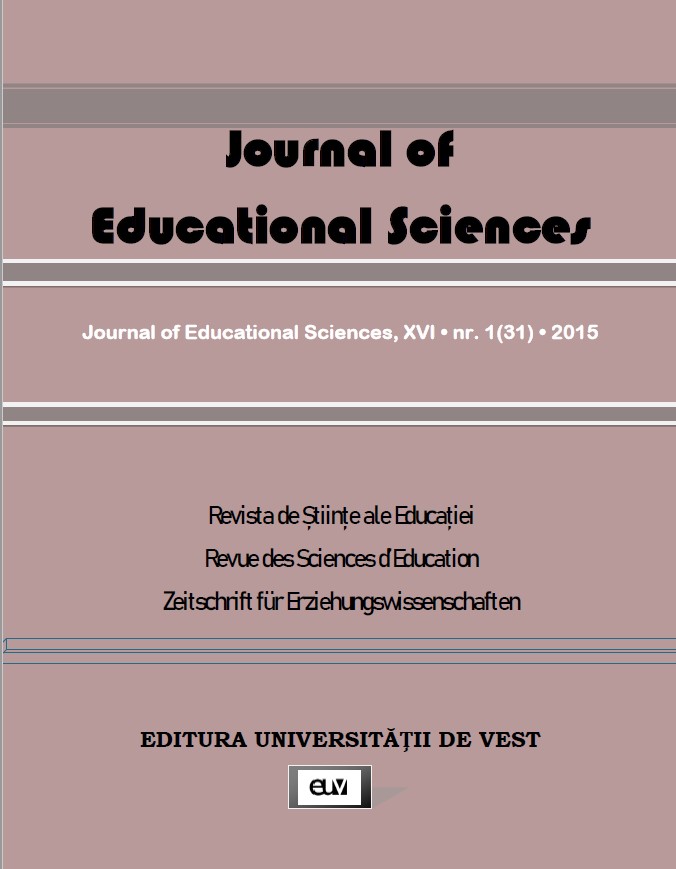
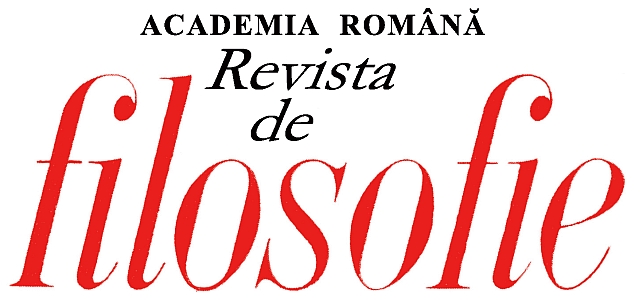
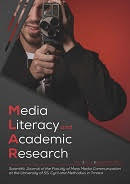
Keywords: Alternative media; Fake news; Mainstream media; Media manipulation
Most of us meet mass media almost every day. We search for information, accept and share them daily. In post-factual time, it is more difficult to focus on and choose from lot of available information, especially when there are various forms of fake news, which some of them are produced strategically and systemically. The Media Manipulation Initiative comes with research focused on the definition of fake news, categorization and strategies of intervention.
More...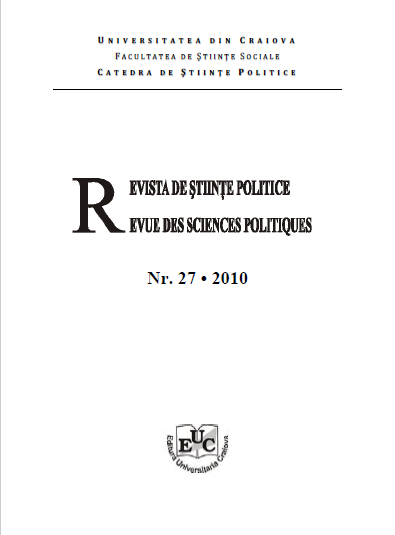
Keywords: globalization; cultural convergence; cultural divergence; multiculturalism; cultural change;
Globalization refers to a raising economic interdependence among countries, as it is reflected in the increasing flux across borders of the three types of entities: goods and services, capital and knowhow. Globalization expects to lead to a cultural uniformization. A major argument against cultural convergence is that traditionalism and modernity can be independent. Powerful traditional values, such as group solidarity, interpersonal harmony, paternalism and familism, can coexist with modern values of individual accomplishment and competition. While convergence in some fields of international activity is easily noticeable, still in the consumer’s values and way of life there is a significant divergence of cultures.
More...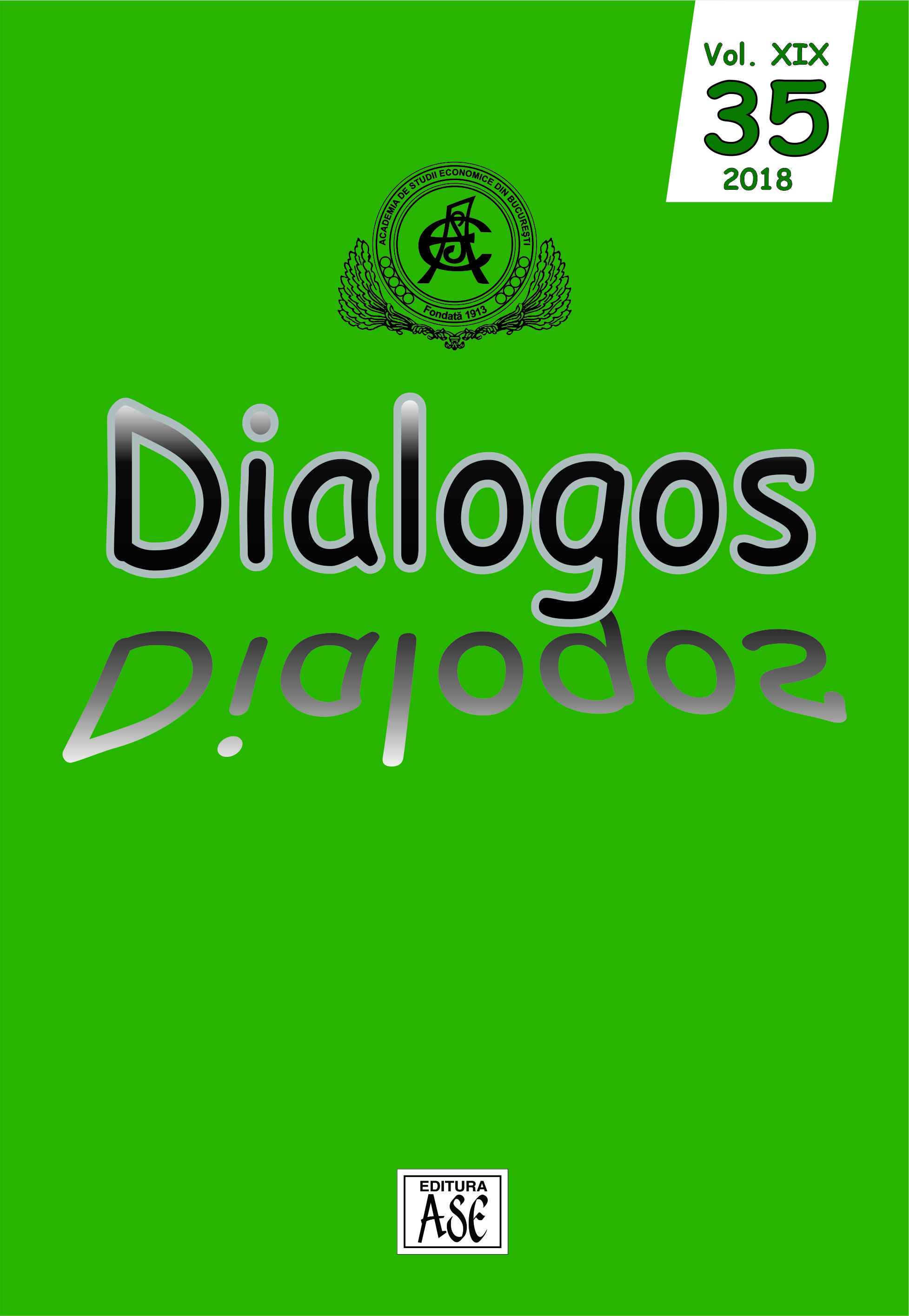
Keywords: chromatics; medieval literature; colour signfication;
The article presents the book “Du Blanc au Noir : les couleurs dans la symbolique médiévale » (From White to Black : the Colours of Medieval Symbolistic”) by Corina Anton, Luminiţa Diaconu and Ioana Munteanu (ed.), published by Bucharest University Press, collection « Mediaevalia », no. 8/ 2018.Key words: medieval literature, significance of colours, light, identity, gender
More...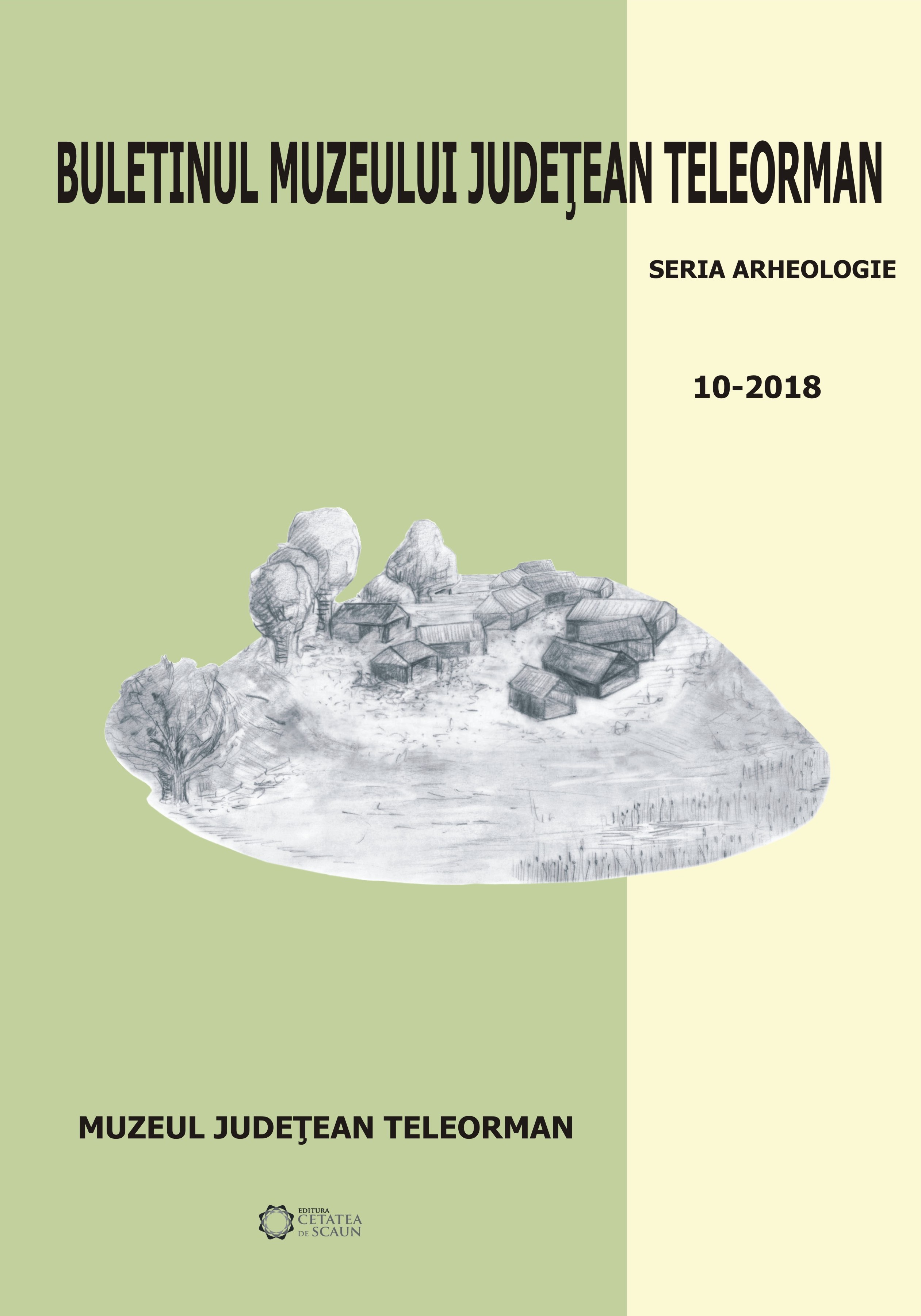
Keywords: Vădastra culture; raw materials; operational schemes; functional cut marks;
The goal of the present paper is to make known an extremely interesting archaeological assemblage of the Vădastra culture, discovered during archaeological research carried out at of Măgura ‘Buduiasca’ settlement. The methodology used aimed to identify the operational schemes used for the manufacture of different typological categories, and to find in which ways the Eneolithic communities exploited the animal environment in order to obtain hard animal material artifacts. Both local (from domestic and wild species) and imported raw materials were used. For bone, generally there is a preponderance of two species, from which a reduced number of skeleton elements were selected as blanks. Antler is not intensely exploited in the industries of the Neolithic from the North-Danube territory and this seems to continue at the beginning of the Eneolithic. The two fragments of Spondylus valves were imported, demonstrating the exchange networks of this community within the Mediterranean area. The study is important because information on Vădastra culture hard animal material industry in Romania is absent and therefore it could have a decisive contribution in outlining an exploitation model for the animal resources of Vădastra communities.
More...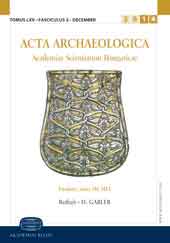
Keywords: red deer canine imitations; grave goods; Ferigile group; Early Iron Age; Romania
Red deer canine ornaments have been known since the Upper Paleolithic as symbolic markers of the status of the possessor. A recent discovery made at the Iron Age cremation necropolis of Valea Stânii (Romania) probably provides the latest prehistoric occurence of this type of personal ornament. This find was part of the grave goods in the burial in barrow no. 4, a double grave (an adult woman and a subadult individual of unidentified sex). Among the cremated bones of the subadult individual were 16 personal adornments made of red deer antler, imitating red deer canines. Most likely, the ornaments were sewn on the funeral clothes. Such imitations of red deer canines indicate the transmission of certain cultural traditions, perhaps related to prestige and representation, over the millennia until the end of the Iron Age in Eastern Europe.
More...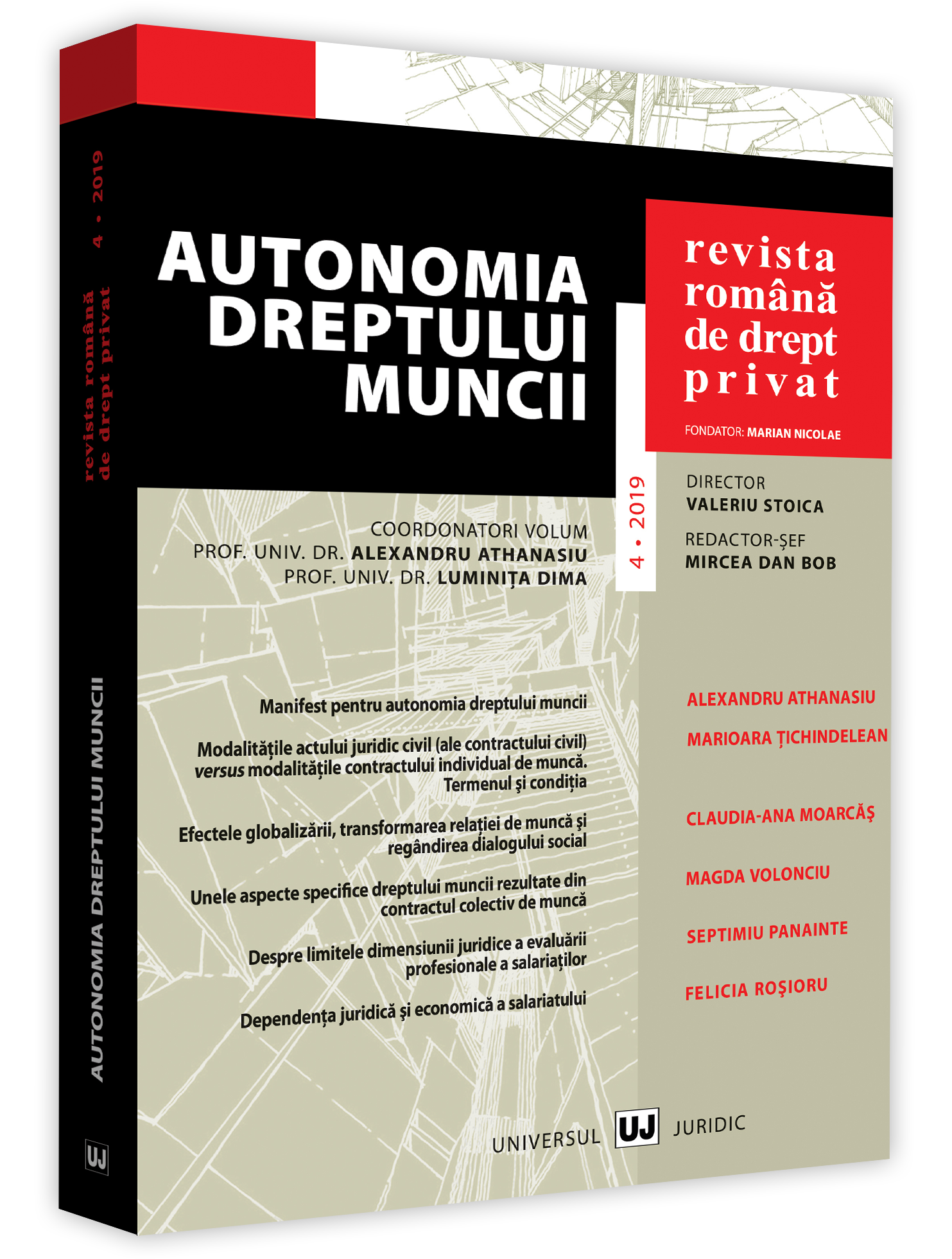
Keywords: areas of law; labour law; autonomous law; labour law specific acts; international and European rules; Treaty of European Union; Treaty on the Functioning of the European Union;
The study describes the particularities of one of the general criteria based on which the areas of law are grouped – the regulation method in the labour law. The labour legislation is actually made up of a set of rules at different tiers: an international and European tier, a national tier and a basic one, made up of the labour law specific acts. After an overview of the specificity of the regulation for each category of related rules in the employment relationships, the purpose of the study shall consist in capturing the essential elements and arguments fully underpinning the statement that the labour law is an autonomous law of mixed private and public nature.
More...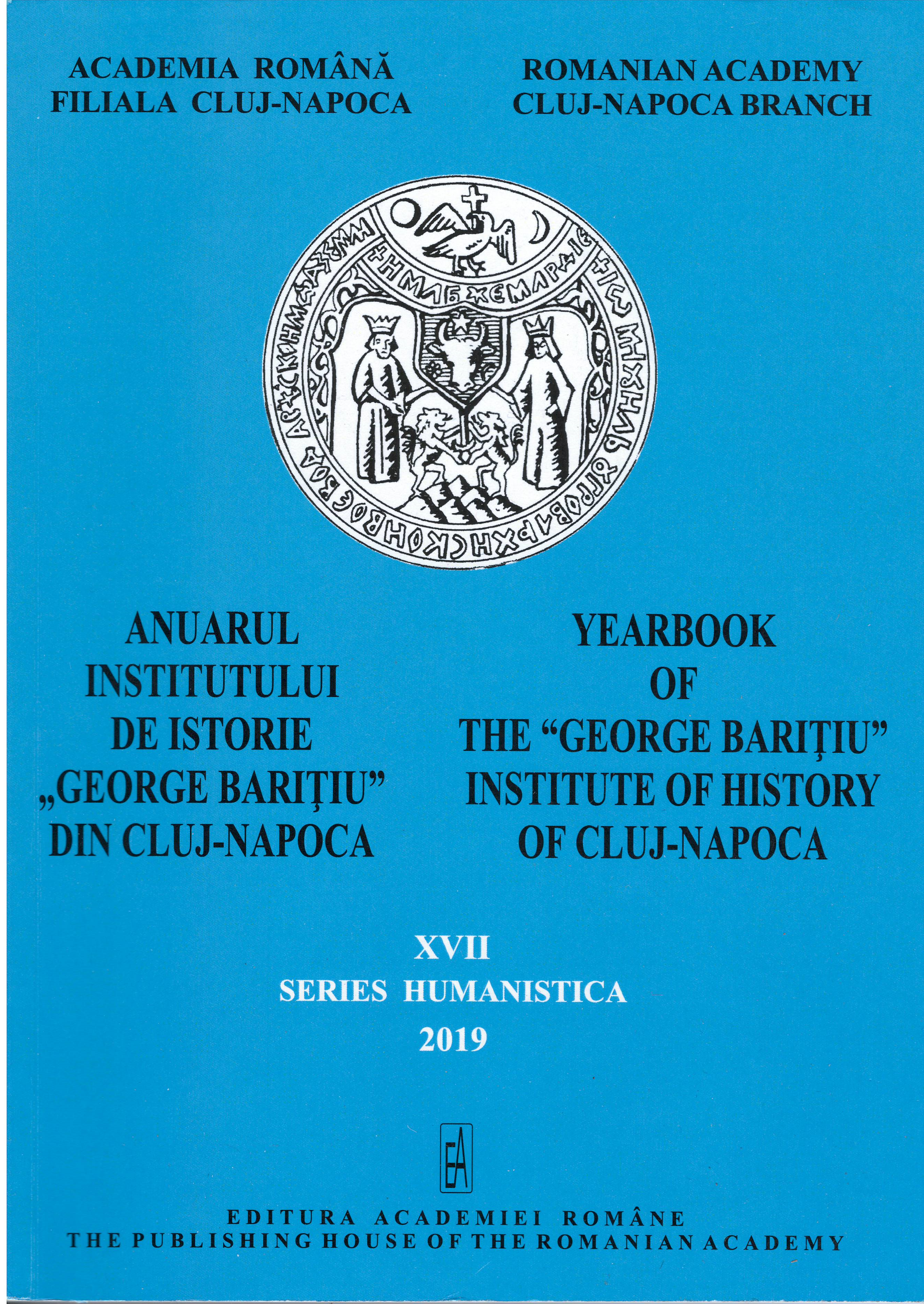
Keywords: psychological journals; abstract components;
The paper follows the extent to which the requirements on the content of the abstracts in four scientific journals from Cluj-Napoca publishing psychology articles are met: The Annual Review (Yearbook) of the «George Bariţiu» History Institute in Cluj-Napoca, Series Humanistica; Cognition, Brain, Behavior. An Interdisciplinary Journal; Journal of Evidence-Based Psychotherapies, and Studia Psychologia-Paedagogia. Requirements on the content of abstracts have been formulated from the consultations dedicated to this topic and are generally based on the indications given by The Publication Manual of the American Psychological Association, sixth edition. They are dependent on the type of research described in the article accompanied by the abstract. The following types of research have been considered: empirical research, narrative review (nonsystematic review, literature reviews), systematic reviews (research synthesis), metaanalysis, case study, and method or instrument development. All the psychology articles from the four journals published in 2009-2018 (N = 550) were analyzed. None of the journals specify in the author's instructions what information should be included in the abstracts. For this reason, the content of abstracts analyzed differs according to the authors of the articles. For each type of research, there is a very low frequency of abstracts that meet all or almost all of the requirements. The research should be extended to all journals containing psychology articles published in Romania.
More...